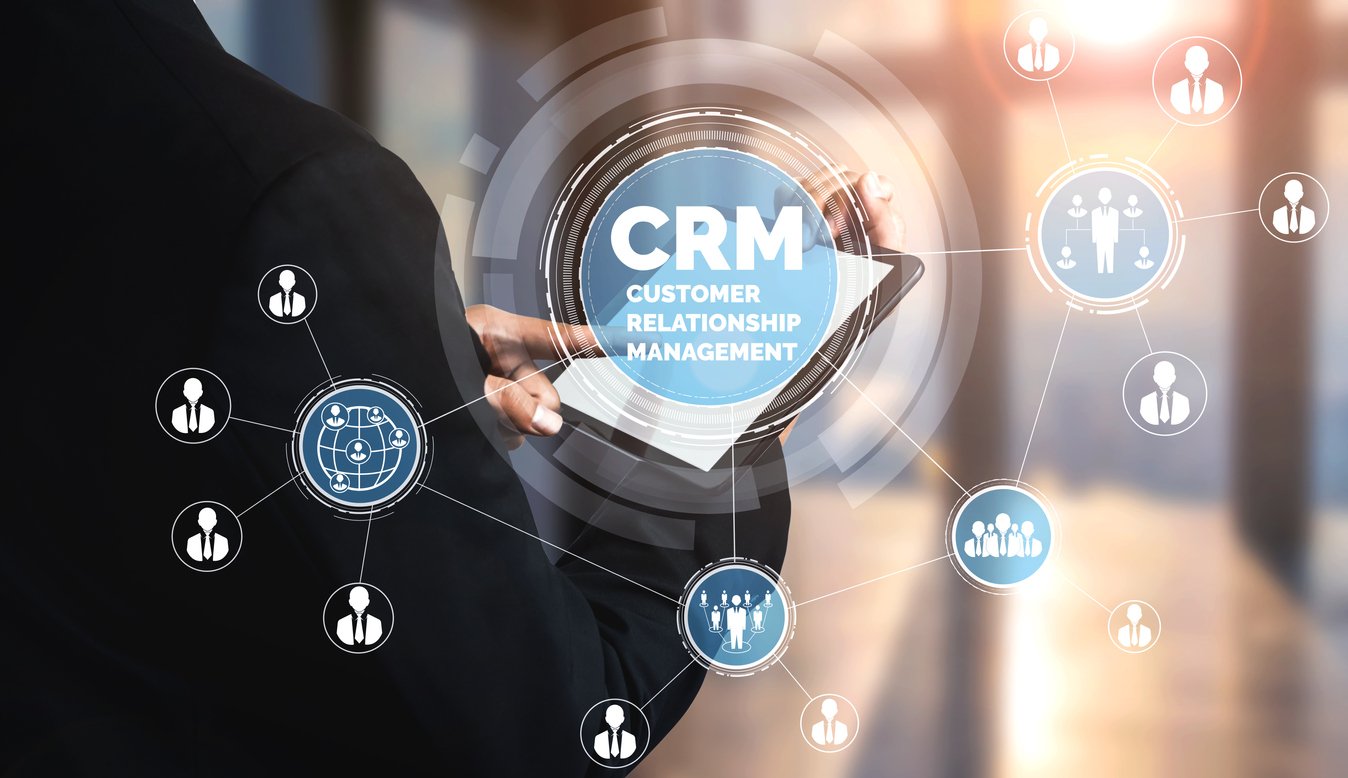
The Power of CRM Prospects: Identify, Nurture & Convert Leads
 Updated on
Updated on
By Ringy
Table of Contents
Table of Contents
Hey there, fellow sales warriors!
Are you tired of chasing down potential clients like a pack of hyenas chasing a gazelle? Well, have no fear because CRM prospects are here!
I know what you're thinking: "What the heck is a CRM prospect?" Don't worry, my friend; we've got you covered. Think of CRM prospects as your garden. You've got to plant the seeds, water them, and give them lots of love and attention to help them grow into beautiful, fruitful customers. And just like a garden, not all prospects are created equal. Some are like those pesky weeds that won't go away, while others are like the prized tomatoes that make your garden the neighborhood envy.
Once you've found your CRM prospects, it's time to manage them like the boss you are. And lucky for you, many tools are available to make this process as smooth as butter. From automated emails to personalized follow-ups, there's something for every type of salesperson.
So, buckle up, buttercup, because we're diving headfirst into the world of CRM prospects. Get ready to take your sales game to the next level!
CRM Prospect Definition
A CRM prospect is a potential customer identified and entered into a CRM system. However, not all potential clients are created equal. Some may have expressed an interest in your product or service, while others may be unaware of your existence.
To better understand CRM prospects, let's break down the different types:
|
Type of CRM Prospect |
Definition |
|
Lead |
A potential customer that has expressed an interest in your product or service, but has not yet made a purchase. |
|
Qualified Lead |
A lead that has been determined to have a higher likelihood of becoming a customer based on their characteristics and behavior. |
|
Opportunity |
A qualified lead that has been contacted and has shown interest in making a purchase. |
|
Customer |
A person or business that has made a purchase and is now a customer. |
It's important to note that not all CRM prospects will make it to the customer stage. Some may drop off at the lead or qualified lead stage, while others may move quickly to the opportunity phase. It all depends on how effectively you can manage and nurture each prospect.
Identifying and qualifying CRM prospects is essential for any successful sales process. It lets you focus on the leads most likely to become customers and avoid wasting time on dead-end prospects.
But how do you identify and qualify CRM prospects?
One way is to use lead scoring, a method of assigning a score to each lead based on their characteristics and behavior, allowing you to prioritize leads based on their likelihood of becoming customers.
Benefits of Using Prospect CRM

Are you tired of losing track of leads and struggling to convert them into customers? Look no further than prospect CRM software. This powerful tool assists organizations of all sizes in streamlining their sales process and closing more deals.
In this section, we’ll explore the advantages of utilizing prospect CRM and how it can help your business achieve its sales objectives.
Improved Sales Efficiency and Effectiveness
Prospects are the lifeblood of businesses, so you must treat them with the utmost care.
Sales efficiency and effectiveness are key metrics that determine the success of any sales organization. Sales efficiency measures how quickly and easily sales reps can close deals, while sales effectiveness measures how well they can target and engage potential customers.
One way to improve sales efficiency is by implementing a customer relationship management system that helps sales reps manage customer interactions more effectively.
CRM prospects software includes the following features:
- Customer behavior tracking
- A centralized repository for client and lead data
- Sale enablement
- Personalized communication
Prospect CRM platforms can help you automate tasks like follow-up emails or small business lead generation. Sales reps use marketing automation tools to free up time and focus on higher-value tasks, such as customer engagement and relationship building.
Higher Conversion Rates and Revenue Growth
Of course, we all want higher conversion rates and revenue growth.
Who doesn't want to make more money?
You can hit the bullseye like a professional dart player by using data-driven insights to target the right prospects at the right time.
No more wasting time and resources on dead-end leads! Plus, by upselling and cross-selling to existing customers, you'll be able to increase revenue per customer and enhance customer loyalty.
It's like hitting two birds with one stone but in a much nicer way.
Enhanced Customer Engagement and Loyalty
Customer engagement and loyalty are like the icing on the cake.
With personalized experiences that meet their specific needs and preferences, customers will come back for more like a kid in a candy store.
And let's not forget about exceptional customer service.
With prompt and professional responses to their needs, you'll create a positive customer experience that builds loyalty and encourages repeat purchases. It's like having a personal assistant for your customers without the HR headache.
Better Alignment Between Sales and Marketing Teams
Think of effective sales and marketing alignment as a good marriage. When it works, it's beautiful, but when it doesn't, you experience a plethora of conflict.
Using a shared CRM system, you can work together more effectively and share insights that can help drive sales. And with marketing automation tools, you'll get real-time feedback on marketing campaigns, allowing you to adjust your strategies quickly and effectively.
It's like a dance party where everyone is on the same beat, and nobody steps on anyone's toes.
Identifying and Qualifying Prospects

One of the critical aspects of sales is identifying and qualifying prospects. You'll need a solid understanding of your potential clients and whether they're a good fit for your service or product to close deals and grow your company.
Whether you're just starting or are a seasoned sales professional, the insights in this section will help you develop a robust pipeline of qualified prospects and ultimately close more deals.
Understanding Customer Profiles and Preferences
So, who is your ideal customer?
You need to understand their preferences and habits to win them over. It's like studying for a final exam! By doing your homework and understanding what makes your customers tick, you can create messaging and offers that resonate with them.
Create ideal customer profiles by outlining the following customer data:
- Preferences
- Buying habits
- Demographics
- Other relevant information
But don't stop there!
Utilize social media, website analytics, and email campaigns to collect data and analyze patterns. That will help you solve the mystery of the customer's requirements and allow you to tailor your marketing assets to meet those needs.
Collecting and Analyzing Customer Data
Now that you have a treasure trove of customer data, it's time to analyze it like a boss!
It's like being a scientist in a lab, but instead of studying beakers and test tubes, you're analyzing customer data to create a sales strategy that converts.
Use tools like customer relationship management software to track customer interactions, website analytics to understand browsing behavior, and social media to monitor engagement. Analyzing this data lets you identify patterns and behaviors that indicate potential interest in your products or services.
The table below shows you the steps involved in collecting and analyzing customer data:
|
Step |
Description |
|
1. |
Determine the key data points you need to collect such as demographics, behavior, interests, and engagement metrics. |
|
2. |
Choose the right data collection methods for your needs, such as surveys, interviews, feedback forms, social media listening tools, or website analytics. |
|
3. |
Ensure data accuracy and quality by using validated survey questions, double-checking data entry, and verifying sources. |
|
4. |
Organize and store the data in a centralized location, such as a CRM software or a data warehouse. |
|
5. |
Analyze the data to identify patterns and insights using tools such as data visualization, regression analysis, or machine learning. |
|
6. |
Use the insights gained to inform your business decisions and improve customer experience, sales, and marketing strategies. |
|
7. |
Continuously monitor and update your data analysis as new data becomes available. |
Collecting and analyzing customer data is essential for effective CRM sales prospecting and personalized marketing. Happy analyzing!
CRM Prospect Management

Managing prospects is essential to any successful sales strategy, and CRM software can help you do just that. With this ability to track leads, manage customer data, and automate sales workflows, CRM is an invaluable asset for companies looking to streamline their prospect management process.
Let’s look at the key CRM prospect management features that can help you take client management to the next level.
Tracking and Monitoring Prospect Interactions and Engagement
First, tracking and monitoring your prospects' interactions and engagement is essential for effective prospect management.
Ask yourself the following questions:
- Did the prospect open your email?
- Was there engagement with social media?
- Did the lead fill out a contact form on your website?
All of these interactions provide valuable data that can inform your next move. And let's be honest, who doesn't love a bit of data-driven detective work?
Creating and Managing Prospects List and Campaigns
Once you've gathered all that data, it's time to organize. Creating and managing prospect lists and campaigns is like arranging a dinner party— inviting the right guests, planning the menu, and setting the table.
In this case, the guest list is your CRM prospect database, and the menu is your marketing content.
You must segment your prospects based on their interests, behaviors, and demographics and tailor your marketing messages accordingly. Then, you can create targeted campaigns that speak directly to their needs and pain points.
And voila! Your prospects will be clamoring to RSVP to your marketing efforts.
Nurturing and Converting Prospects into Customers
Finally, the most crucial part of CRM prospect management—nurturing and converting those prospects into loyal customers.
You can gain trust and loyalty by consistently providing value and building relationships with prospects. That means sending them personalized content, offering exclusive deals, and providing exceptional customer service.
And when the time is right, you can move and ask for the sale. But just like dating, timing is everything – you need to strike while the iron is hot!
Tools for Managing CRM Prospects

Managing CRM prospects can be arduous, but fortunately, a wide variety of tools are available to automate and streamline the process. From customer relationship management tools to marketing automation software, these platforms make sales teams' jobs easier, ultimately driving more revenue for their organizations.
Here we check out essential tools for managing your CRM prospects and give you insights into each.
CRM Software and Automation Tools
Any business serious about prospect management should invest in quality CRM software.
This tool is like a personal assistant that can keep track of all your prospects' interactions, store their contact information, and help you segment the database for targeted campaigns.
And if you're fancy, you can even invest in automation tools that can handle repetitive tasks like sending follow-up emails or scheduling social media posts.
Think of it like having a virtual assistant who never takes a coffee break!
Email Marketing and Lead Nurturing Tools
Email marketing is still one of the most effective ways to nurture and convert CRM prospects into customers.
But managing email campaigns can be a hassle, especially if you're trying to personalize each message for different database segments.
Enter email marketing and lead nurturing tools!
These tools can help you create beautiful, professional-looking emails, segment the database for targeted campaigns, and track open and click-through rates. And with features like A/B testing and automation, you can test and refine email campaigns until they're humming like a well-oiled machine.
Sales and Marketing Analytics Tools
Sales and marketing analytics tools are the secret weapons in any successful prospect management strategy.
These tools can assist with the following:
- Identifying areas of improvements
- Tracking ROI
- Measuring the success of campaigns
Analyze your data to make data-driven decisions that will optimize sales and marketing efforts and ultimately increase revenue. Plus, as a bonus, you’ll have bragging rights by showing off a good chart or graph at the next sales meeting.
CRM Prospects - Final Thoughts
The opportunities presented by CRM prospects are vast and crucial for businesses looking to improve customer relationships, increase sales, and achieve long-term success.
Prospects within CRM are vital for companies to build stronger customer relationships, drive revenue growth, and stay ahead of their competitors.
Organizations can unlock the full potential of their customer relationships by implementing a well-thought-out CRM strategy and leveraging consumer data effectively.

Skyrocket your sales with the CRM that does it all.
Calling? Check. SMS? Check. Automation and AI? Check. Effortlessly keep in touch with your customers and boost your revenue without limits.

Take your sales to new heights with Ringy.
Sales in a slump? Ringy gives you the tools and flexibility you need to capture leads, engage with them, and turn them into customers.
Subscribe to Our Blog
Enter your email to get the latest updates sent straight to your inbox!
Categories
Related Articles




































































































